The KMODE EXCEPTION NOT HANDLED error is a common Blue Screen of Death (BSOD) issue that Windows 11 users may encounter, often during or after system upgrades. This error can disrupt your workflow and cause concern, but there are several effective methods to resolve it.
This BSOD is typically associated with outdated BIOS versions, faulty drivers, or misconfigured system settings. Other potential causes include interference from third-party antivirus software, corrupt system files, or faulty RAM. Below are several methods you can follow to fix this error.
1. Update Your BIOS
An outdated BIOS is often a significant factor behind the KMODE EXCEPTION NOT HANDLED error. Early versions of Windows 11 encountered kernel mode crashes due to outdated BIOS firmware. Thankfully, most motherboard manufacturers have released updates to address this issue.
To resolve the error, updating your BIOS to the latest version is essential. Visit your motherboard manufacturer's official website to download the latest BIOS firmware for your specific model.
Step 1: Boot your computer into safe mode.
Step 2: Access the manufacturer's website and locate the BIOS update section for your motherboard model.
Step 3: Download the latest BIOS update and follow the manufacturer's instructions carefully to install it.
Note: The process for updating BIOS varies significantly between different manufacturers and models. Be sure to consult the specific instructions provided by your motherboard manufacturer to avoid any potential issues.
After successfully updating the BIOS, restart your computer and check if the error persists.
2. Uninstall and Reinstall Graphics Card Driver
Uninstalling and reinstalling the graphics card driver can often resolve the KMODE EXCEPTION NOT HANDLED error.
Step 1: Open the Start Menu and type Device Manager in the search bar. Click on the 'Device Manager' option from the search results.

Step 2: In the Device Manager window, expand the 'Display adapters' section by double-clicking on it. Right-click on your graphics card listed and select 'Uninstall device' from the context menu.
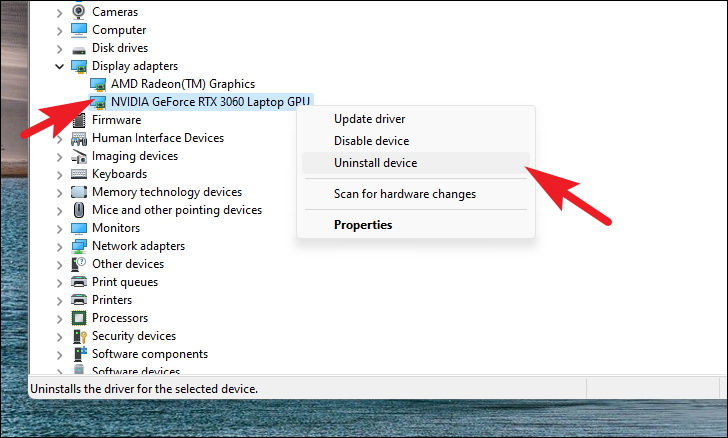
Step 3: In the confirmation dialog, check the box next to 'Attempt to remove the driver for this device' and click 'Uninstall'.
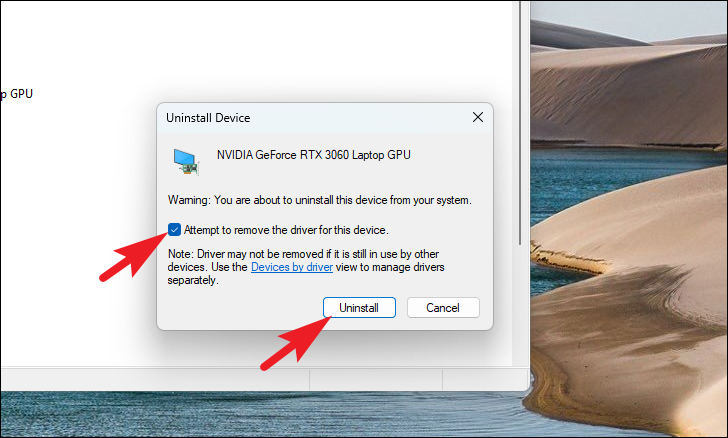
If you have multiple graphics cards installed, repeat these steps for each one.
Step 4: Restart your computer to ensure the changes take effect.
Step 5: After rebooting, open the Start Menu and click on the 'Settings' icon.
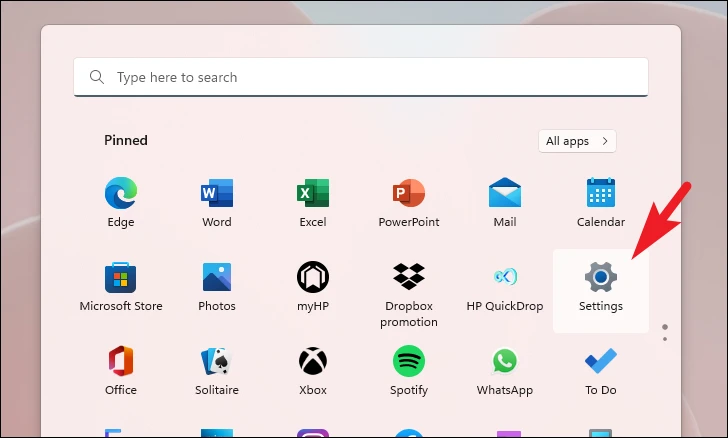
Step 6: In the Settings window, select 'Windows Update' from the left-hand menu.
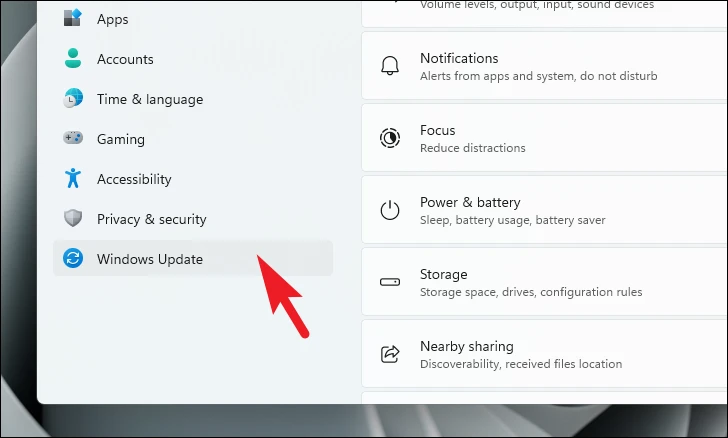
Step 7: Click on 'Advanced options' under the 'More options' section.
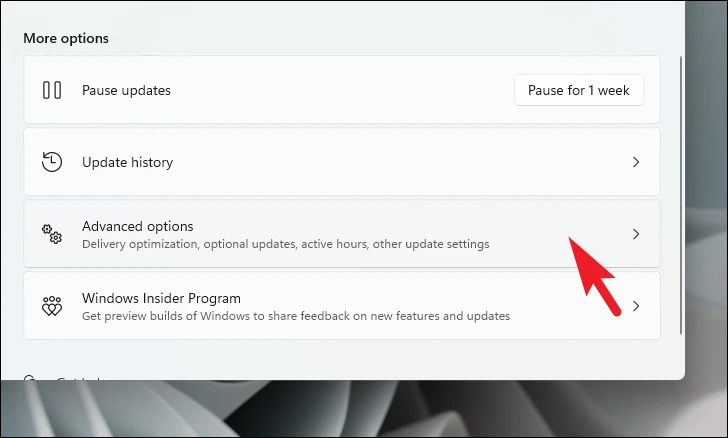
Step 8: Scroll down to the 'Additional options' section and select 'Optional updates'.

Step 9: Expand the 'Driver updates' section. Find your graphics driver in the list, check the box next to it, and click 'Download & install'.
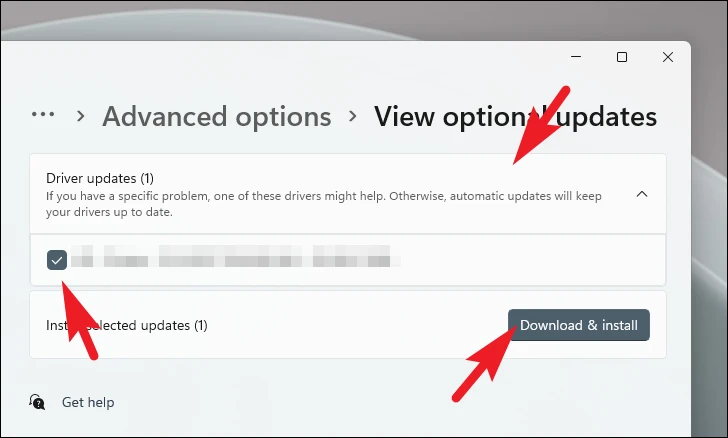
After the driver installation is complete, restart your computer and verify if the issue has been resolved.
3. Run Windows Memory Diagnostic Tool
The Windows Memory Diagnostic Tool can detect and fix issues with your computer's RAM, which may be causing the KMODE EXCEPTION NOT HANDLED error.
Step 1: Open the Start Menu and type Memory Diagnostic. Select 'Windows Memory Diagnostic' from the search results.
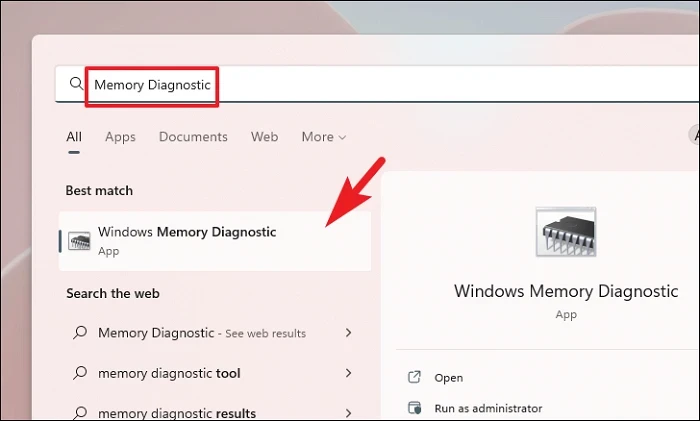
Step 2: In the Windows Memory Diagnostic window, choose either 'Restart now and check for problems' to begin the diagnostic immediately or 'Check for problems the next time I start my computer' to schedule it for the next reboot.
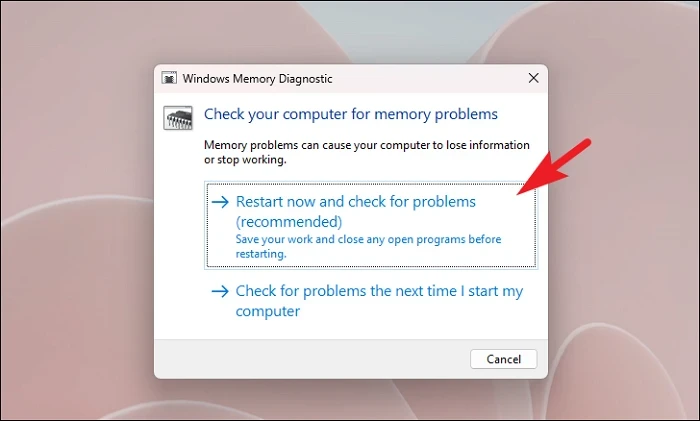
If the diagnostic tool finds any errors with your RAM, you may need to replace the faulty memory modules to resolve the issue.
4. Run SFC and DISM Scans
Running the System File Checker (SFC) and Deployment Image Servicing and Management (DISM) scans can repair corrupt system files that might be causing the error.
Step 1: Open the Start Menu, type Terminal, right-click on the 'Terminal' app, and select 'Run as administrator'.
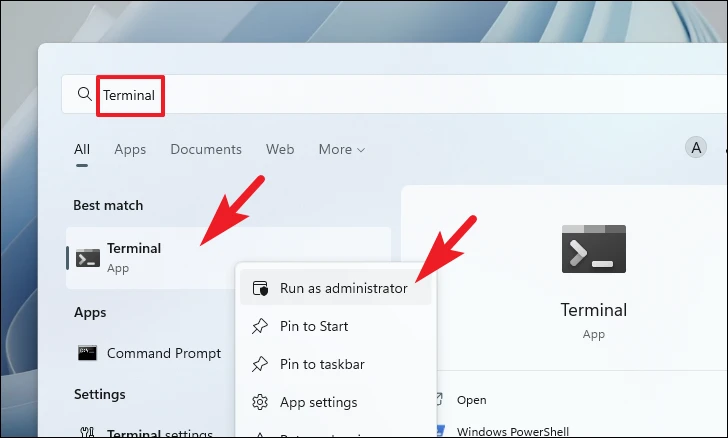
Step 2: If prompted for administrator permissions, click 'Yes' or enter the administrator credentials.

Step 3: In the Terminal window, type the following command and press Enter to restore the system image:
DISM /Online /Cleanup-Image /RestoreHealth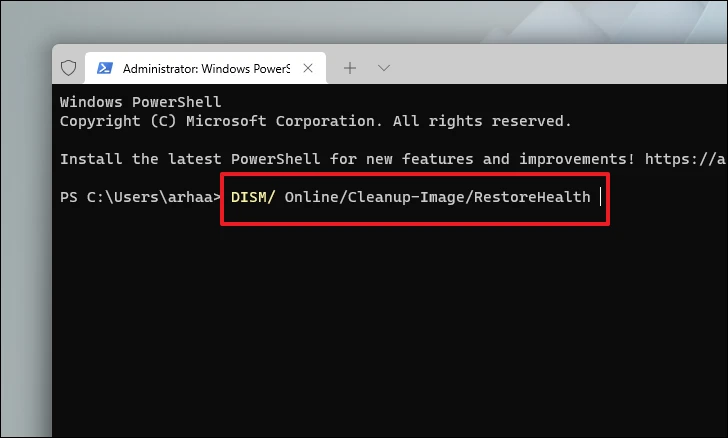
Step 4: After the DISM scan completes, run the System File Checker by typing the following command and pressing Enter:
SFC /scannow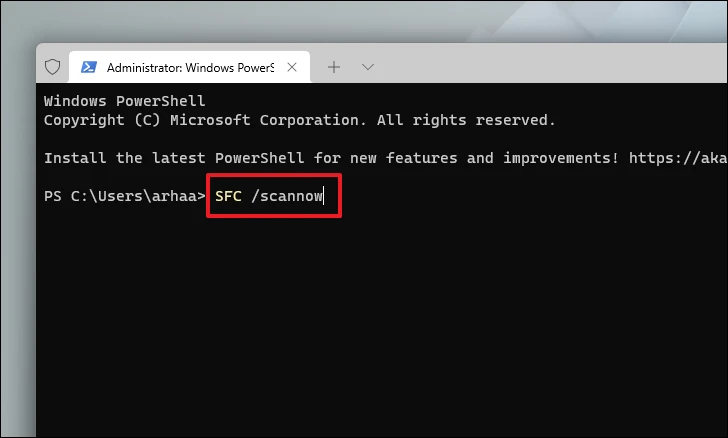
Once the scans are complete, restart your computer and check if the error has been resolved. If corrupted files were found and repaired, this should fix the issue.
5. Disable Third-Party Antivirus Software
Sometimes, third-party antivirus software can interfere with system processes, leading to the KMODE EXCEPTION NOT HANDLED error. Temporarily disabling your antivirus software may help identify if it's the source of the problem.
Step 1: Locate your antivirus software's icon in the system tray (usually at the bottom-right corner of the screen).
Step 2: Right-click the antivirus icon and select the option to disable or pause protection. The exact steps may vary depending on the software.
Step 3: Once disabled, monitor your system to see if the error persists.
If the error is resolved after disabling the antivirus, consider updating the software or switching to a different antivirus solution. Remember to re-enable your antivirus protection to keep your system secure.
6. Perform a Clean Boot
Performing a clean boot starts Windows with a minimal set of drivers and startup programs, which can help identify if a background program is causing the error.
Step 1: Press Windows + R to open the Run dialog box. Type msconfig and press Enter.

Step 2: In the System Configuration window, under the 'General' tab, select 'Selective startup' and ensure that 'Load system services' is checked.
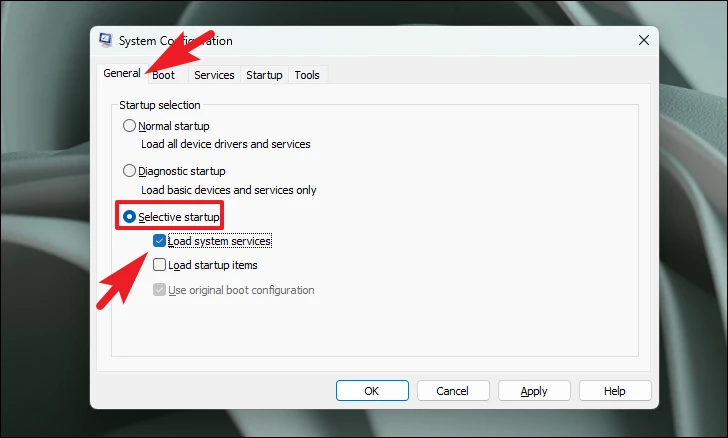
Step 3: Navigate to the 'Services' tab. Check the box next to 'Hide all Microsoft services' to ensure you don't disable essential Windows services.
Step 4: Click 'Disable all' to disable all remaining third-party services. Then, click 'Apply' and 'OK' to save changes.

Step 5: Restart your computer.
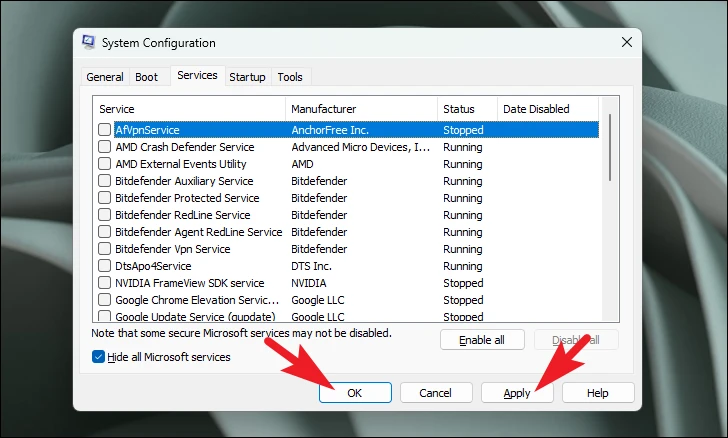
After the restart, check if the error still occurs. If the error is resolved, it indicates that one of the disabled services was causing the problem. You can re-enable the services one at a time to identify the culprit.
7. Disable Fast Startup
Disabling the Fast Startup feature can sometimes fix the KMODE EXCEPTION NOT HANDLED error, as this feature may interfere with the normal boot process.
Step 1: Open the Start Menu, type Control Panel, and select it from the search results.
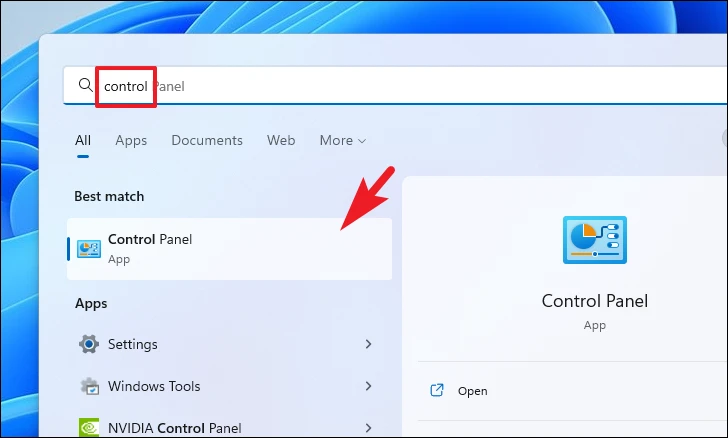
Step 2: In the Control Panel, click on 'Power Options'.
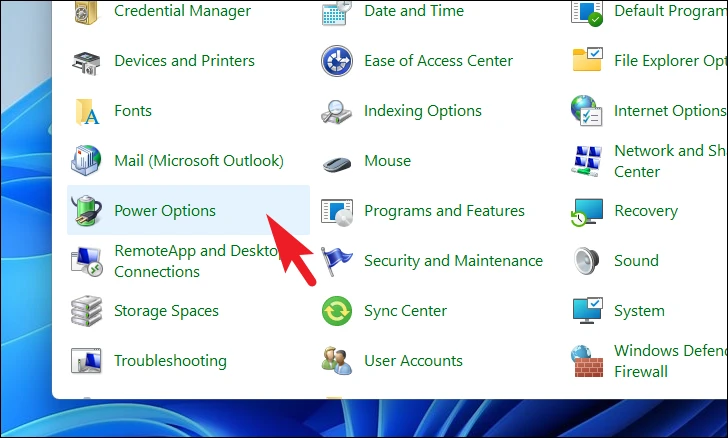
Step 3: From the left-hand menu, select 'Choose what closing the lid does'.
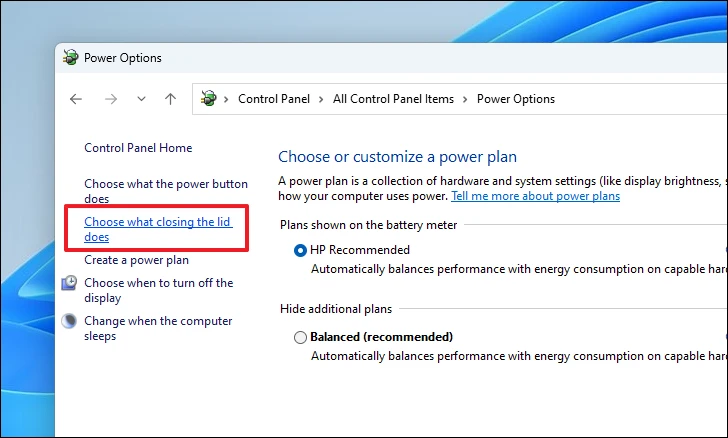
Step 4: Click on 'Change settings that are currently unavailable'. You may need to provide administrator permission.
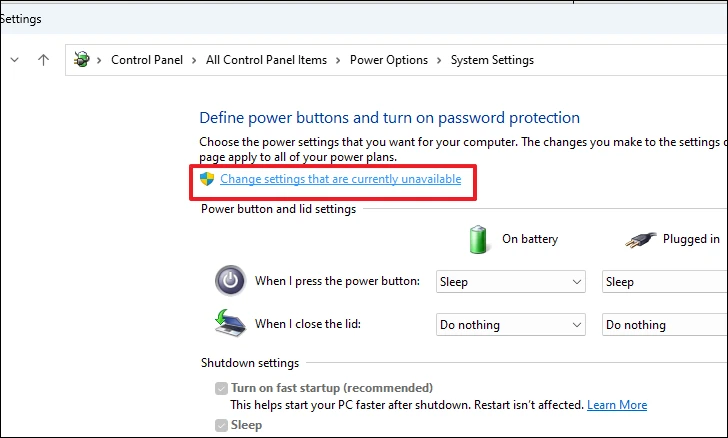
Step 5: Under 'Shutdown settings', uncheck the box next to 'Turn on fast startup (recommended)'. Click 'Save changes' to apply the settings.
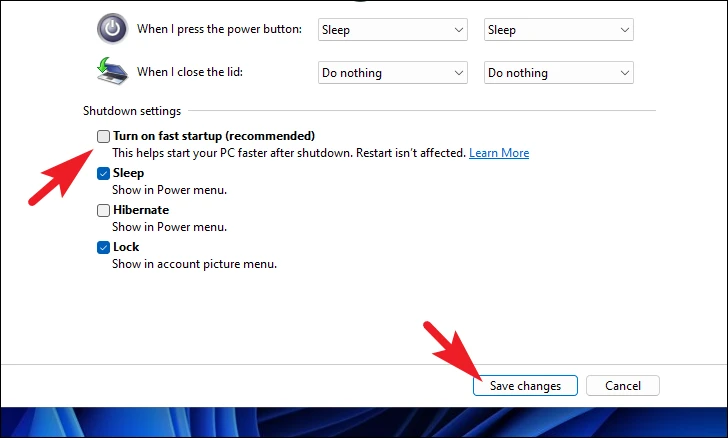
Restart your computer to see if the error has been resolved.
8. Free Up Disk Space
Lack of sufficient disk space can lead to various system issues, including the KMODE EXCEPTION NOT HANDLED error. Freeing up space using Windows 11's built-in cleanup recommendations can help.
Step 1: Open the Start Menu and select 'Settings'.
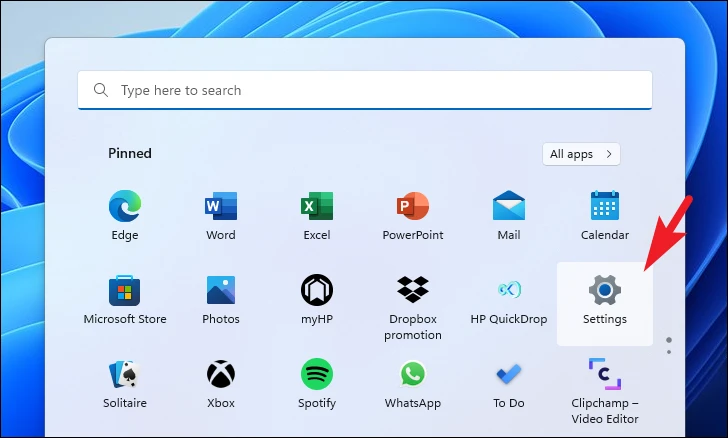
Step 2: In the Settings window, ensure 'System' is selected from the left-hand menu.
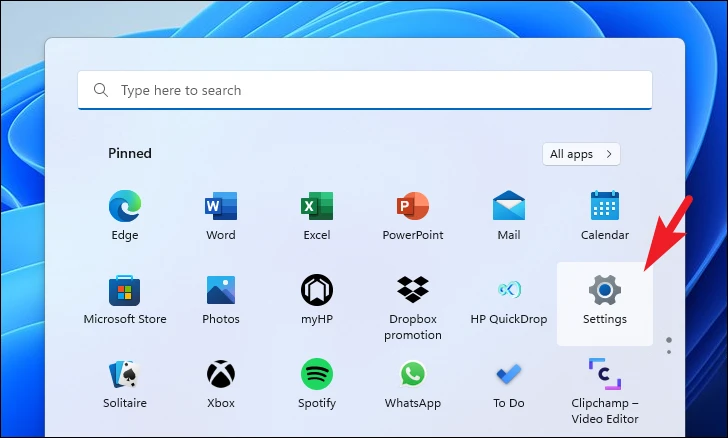
Step 3: Scroll down and click on 'Storage'.

Step 4: Under the 'Storage management' section, select 'Cleanup recommendations'.
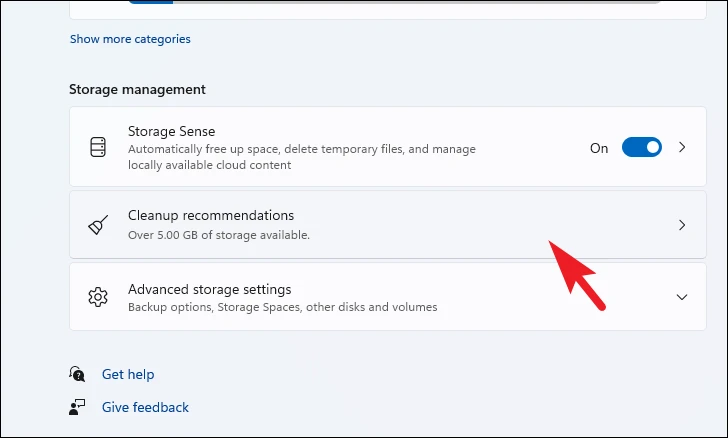
Step 5: Expand the 'Temporary files' section. Check the boxes next to the categories of files you wish to remove, then click 'Clean up'.

Step 6: Expand the 'Large & unused files' section. Review the listed files and check the boxes next to the ones you want to delete. Click 'Clean up' to remove them.
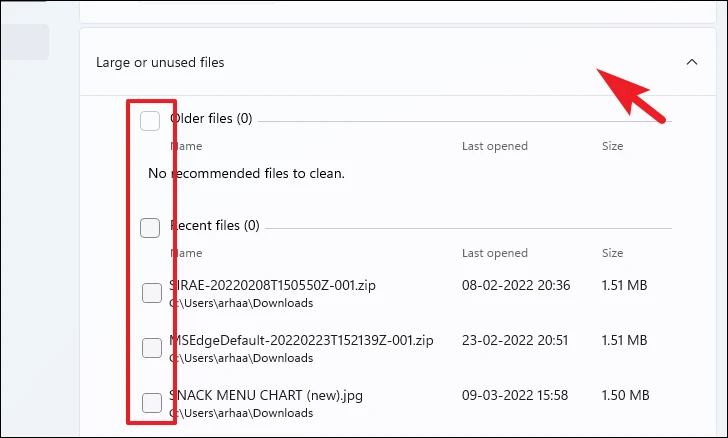
Step 7: Expand the 'Unused apps' section. Select any apps you no longer need by checking the boxes next to them, and click 'Clean up' to uninstall them.
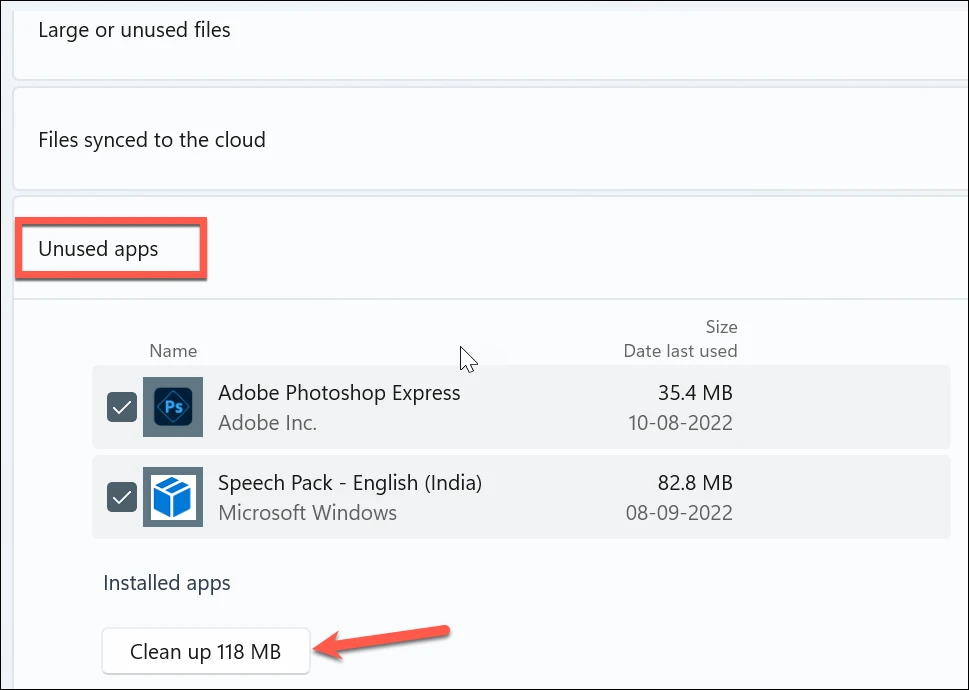
After freeing up disk space, restart your computer and see if the error continues.
9. Reset Your PC
If none of the previous methods have resolved the error, resetting your PC might be necessary. This process reinstalls Windows 11, potentially fixing deep-rooted system issues. You can choose to keep your personal files, but all installed applications and settings will be removed.
Step 1: Open the Start Menu and click on 'Settings'.
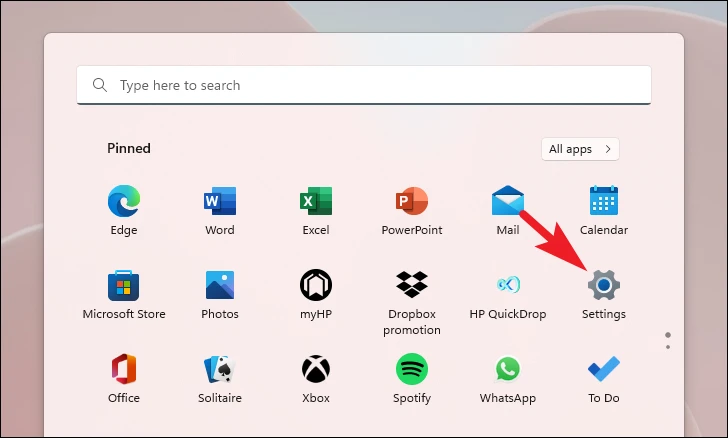
Step 2: In the Settings window, select 'System' from the left-hand menu.

Step 3: Scroll down and click on 'Recovery'.
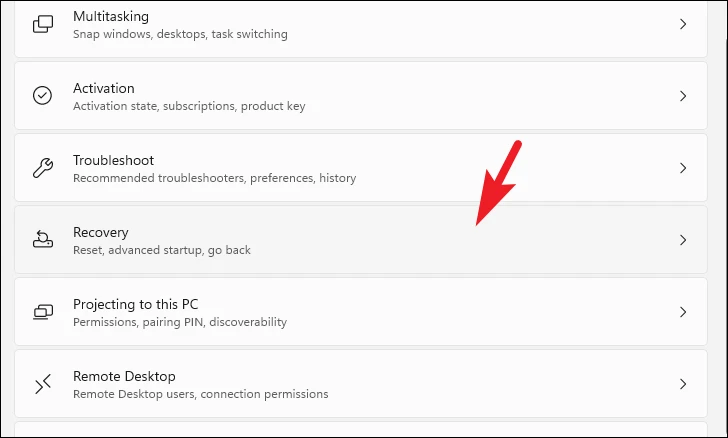
Step 4: Under 'Reset this PC', click on the 'Reset PC' button.
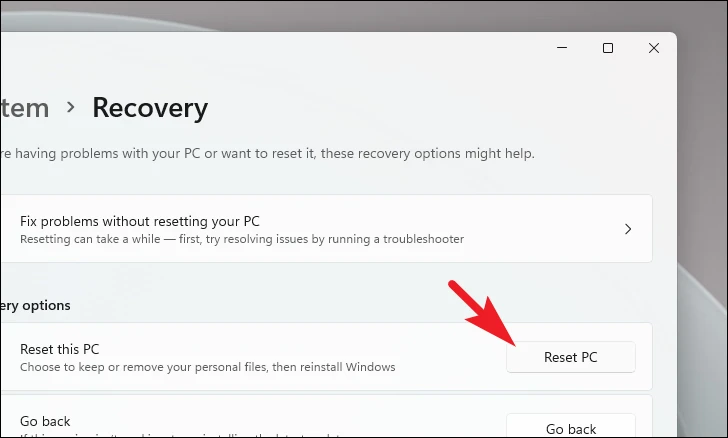
Step 5: Choose 'Keep my files' to retain your personal data or 'Remove everything' to perform a complete reset.
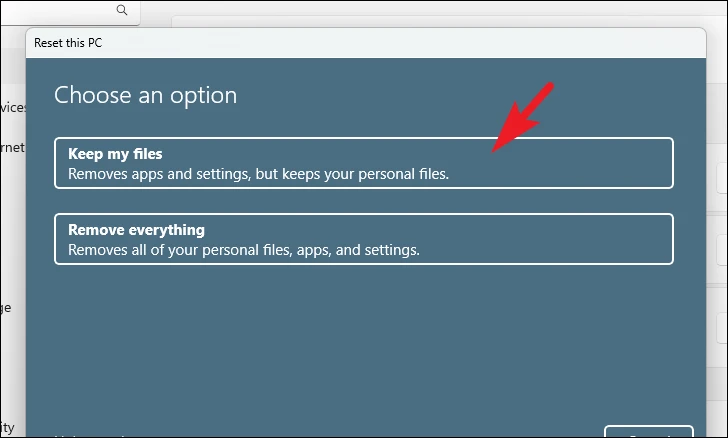
Step 6: Select 'Cloud download' to download a fresh copy of Windows 11. This option ensures potential issues with your current installation are bypassed.
Note: 'Cloud download' requires an internet connection and will download approximately 4 GB of data.
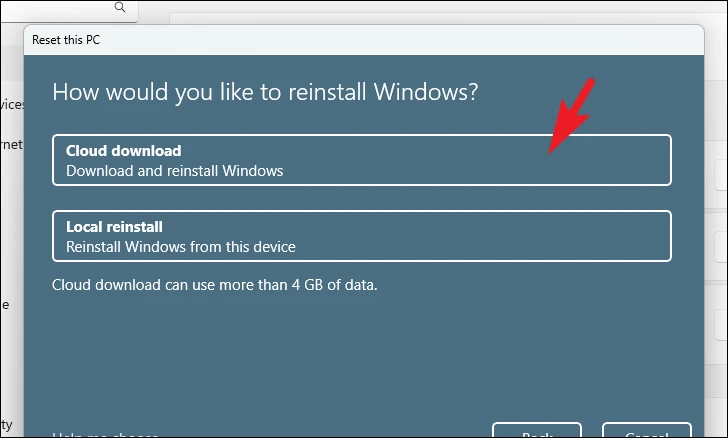
Step 7: Review your reset settings. If you need to adjust them, click on 'Change settings'. Otherwise, click 'Next' to proceed.
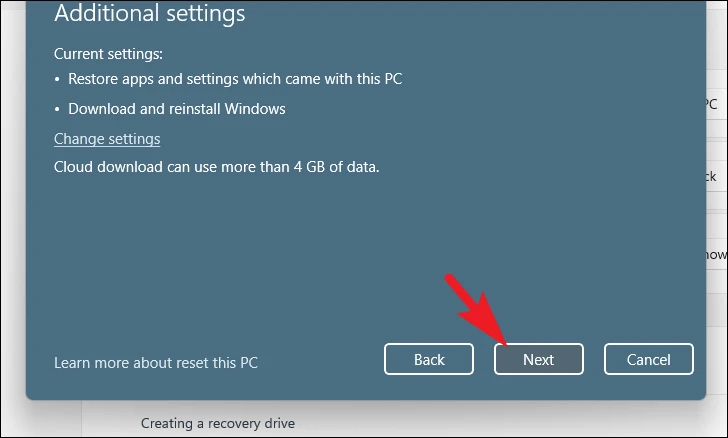
Step 8: If prompted that you won't be able to roll back to a previous version, click 'Next'.
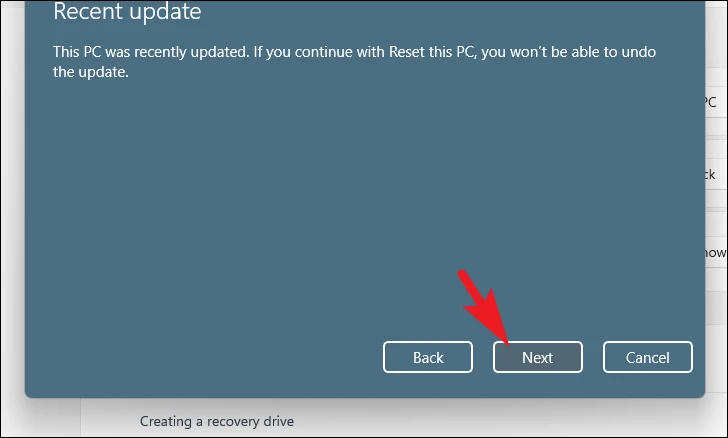
Step 9: Read through the information on how the reset will affect your system. When ready, click 'Reset' to begin the process.

The reset process may take some time. Once completed, your system will restart, and you can check if the error has been resolved.
By following these methods, you should be able to resolve the KMODE EXCEPTION NOT HANDLED error on your Windows 11 PC. If the problem persists, consider seeking professional technical assistance to diagnose potential hardware issues.


